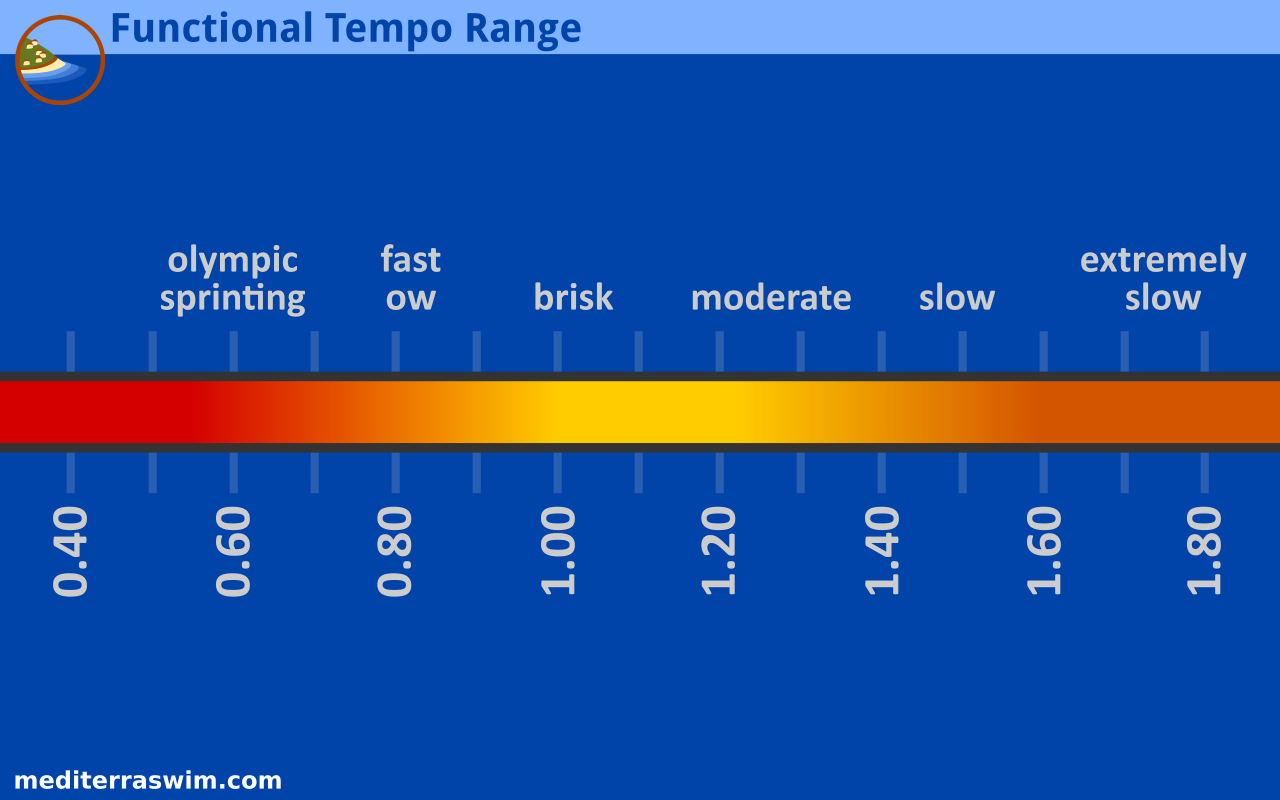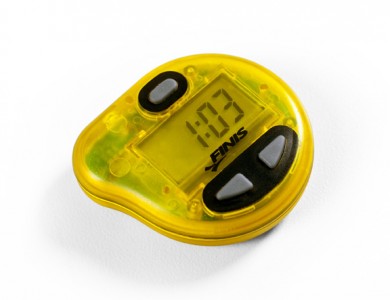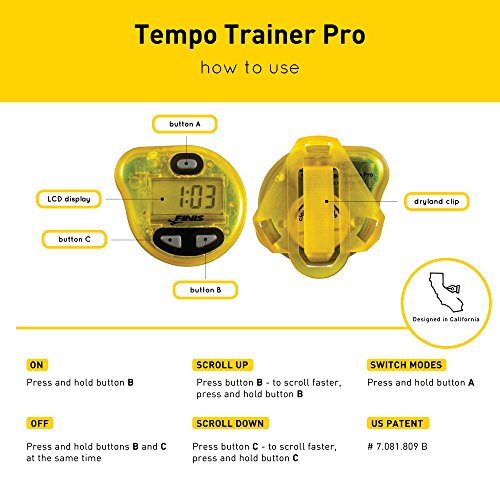by Admin Mediterra | Sep 24, 2020 | Tempo
If you don’t already have a guess as to what tempo to start with, in Mode 1 set your TT to 1.45 seconds and swim one length. If that feels too fast, slow down the TT by +0.03 and swim another length. If that starting tempo of 1.45 feels too slow, then speed up the TT by -0.03 and swim another length.
If you are not sure where to start or what is too fast or too slow compared to others, you may read more in What is a Functional Range of Tempo?
Repeat that process of adjusting tempo and swimming another length, until the tempo feels more comfortable, which means you can maintain your normal SPL at that tempo for a long swim (whatever is ‘long’ for you). As you hone in on that most comfortable tempo (which we label at ‘TC’) make smaller changes in tempo, like +0.02 or +0.01 until you hit the center of what feels comfortable.
When you feel that you have found a tempo close enough to your comfortable center, then that can be your first TC reference point. Keep in mind that as you train more with tempo your TC will certainly shift; as your skills and fitness expand, what feels like a fast tempo to you right now will become quite comfortable later on.
A swimmer might work through a series of repeats trying to zero in on her comfortable tempo, like this…
- Starts at 1.45 and it feels too rushed
- Changes to 1.45 + 0.03 = 1.48 and it still feels too rushed
- Changes to 1.48 + 0.03 = 1.51 and it still feels fast, not as much
- Changes to 1.51 + 0.03 = 1.54 and it feels easy, but perhaps slightly slow
- Changes to 1.54 – 0.02 = 1.52 and it feels better
- Changes to 1.52 – 0.01 = 1.51 and now it feels just right
- She swim another couple lengths at 1.51 to confirm that this feels like the comfortable tempo TC.
by Admin Mediterra | Sep 24, 2020 | Advanced Skills
Get Familiar with the Buttons
The very first task is to practice using the buttons on the Tempo Trainer Pro (TT) and get familiar with the sound of the BEEP and what the numbers on the screen mean. You can read more about this in Tempo Trainer Pro Basics.
Practice Coordinating Movements with the Beep
The second task is to simply get acquainted with how to coordinate your stroke rhythm with the BEEP of the Tempo Trainer Pro.
For this we recommend starting with a tempo of about 1.45 second per stroke (with the TT in Mode 1, click the left or right button until 1.45 appears on the screen). That is slow enough that most people will find it comfortable.
It may be easiest to coordinate the entry with the BEEP. Do a few short repeats or a few lengths to get familiar with how to do that, and observe the effects it has on your stroke and on your attention.
Finding Your Current Comfortable Tempo
Starting at 1.45 seconds may or may not be your most ‘comfortable’ tempo. We encourage you to experiment with it, trying gradually slower or gradually faster tempos until (like Goldilocks) it feels just right for your attention and control.
There are two buttons on the lower part of the device face. You slow the tempo down (the seconds go up) by pushing the right button – one click decreases it by +0.01 seconds (a hundredth of a second). You speed up the tempo (the seconds go down) by pushing the left button – one click increases it by -0.01 seconds.
You may view more guidance for Finding Your Current Comfortable Tempo.
What is ‘Fast’ or ‘Slow’ Tempo?
What is fast or slow compared to other swimmers, you mean?
If you are not sure what is too fast or too slow compared to others, you may read more in What is a Functional Range of Tempo?. It may help to have some sort of reference point for what is considered a ‘slow’ or ‘medium’ or ‘fast’ tempo, compared to swimmers, or what is considered appropriate for certain kinds of events (like sprinting versus long distance).
Not only do you want to develop your capability to hold good form at the tempo appropriate for your pace goals, but also to be capable of swimming with good form at a wider range of tempos along that absolute scale from very slow to very fast.
If this interests you, there is a lot more to study on tempo in the Knowledge Base.
by Admin Mediterra | Sep 24, 2020 | Tempo
Tempo is the term we use to talk about the rate at which the arms are moving through the stroke cycle. This is measured in seconds per stroke. The Tempo Trainer Pro gives us a little BEEP at this seconds interval so we know when to time each stroke.
Everyone, without even thinking about it, will start swimming and move the arms at some rate which is ‘normal’ to that person. But once you have learned a little about the role of tempo in the stroke will eventually wonder what tempo should I use?
You first need to learn to be in control of your stroke length. Then you can add training for tempo to it. But, assuming you are ready for it, here is a fuzzy scale on which to see where your current tempo range is, and what direction it may need to shift, depending on what event you are training for.

If you are currently working within the 1.00 to 1.40 second range, this is good range for a lot of swimming purposes.
If you are training with tempos below (faster than) 1.00 then it might be suitable to the kind of event and speed you are training for, or it might be an indication that you have an inadequate stroke length and should instead, slow tempo, and first learn to lengthen your stroke.
If you are training with tempos above (slower than) 1.40 then it may be suitable to doing slow, careful drill work and learning new movement patterns. But this is getting into the range where the density of water makes you slow down too much on each stroke, either requiring much more force-per-stroke to re-accelerate, or your stroke pressure is too light and you do not ever gain momentum in your movements.
The lesson is this: it is inefficient to swim with tempo on either extreme, though there may be good reasons for temporarily training in those tempos.
Also, keep in mind that tempo is meaningless without a relationship to stroke length. One could always jump in the water, spin the arms really fast and go nowhere. There must be traction on each stroke – the body must slide forward consistently on each stroke, no matter how fast those arms spin. And this is why we train first for controlling stroke length, then add tempo training next.
If you are in one of those extremes, the good news is that, when you follow an adaptation process (as provided in many of our Dojo courses) it is relatively easy to adjust your comfortable tempo range when moving it toward that middle zone.
by Admin Mediterra | Sep 24, 2020 | Advanced Skills
In most of our training plans in the Dojo and in live training sessions we will be working with tempo (a form of stroke rate) and controlling it using a device known as a Tempo Trainer Pro, made by Finis.
What is Tempo?
Tempo is the rate at which your arms (or whole body) are moving through the stroke cycle. For convenience in pool training, we measure tempo in units of ‘seconds per stroke’. Over many stroke cycles to get a more accurate average, we can measure from the time between each rotate of the torso, or we can measure the time it takes after one arm has left a position in the stroke cycle for the other arm to reach that same position . For example, we could measure the time between the left arm coming to the entry point and the right arm coming to the entry point in the stroke cycle.
What is the Tempo Trainer Pro?
A Tempo Trainer Pro (which we often abbreviate as “TT”) is a small, waterproof metronome we use for swimming. You can read more about this in Tempo Trainer Pro Basics.
Why Train With Tempo?
The first objectives for training with a TT is to provoke the brain to refine control over the precision and consistency of your movement patterns. The Tempo Trainer helps build your focused attention and sense of timing, helping the body ‘memorize’ the movement deeply. When you train enough with the TT, you’ll eventually not need it any more – just like a musician would use a metronome to perfect timing then set it aside for the concert.
There are three ways we may have you first start to use the Tempo Trainer:
- Using a comfortable tempo, set a steady rhythm to the stroke and train the brain to memorize that rhythm.
- Using a comfortable tempo, call your attention to a particular point in the stroke cycle, stroke after stroke.
- To expand your comfortable tempo range by working on the edges of what is uncomfortably fast tempo and what is uncomfortably slow.
By first working with a comfortable tempo you can give the brain a chance to organize and smooth out the motions under the constraint of a fixed time interval.
Then you can begin working with slightly uncomfortably-slow tempos to challenge your balance and streamline skills. Then you can begin working with slightly uncomfortably-fast tempos to challenge your precision under the stress of faster movements.
There are more ways to use it once we get into advanced training, but these are where we like you to start. Later on we use TT training, in conjunction with stroke length training, to bring your stroke rate down to the range suitable for your pace goal. Tempo work is recommended only after you have the four fundamental features working in your stroke.
Using a Tempo Trainer adds a new level of challenge to the brain while training your stroke technique. For this reason it takes some time and understanding to learn to use one, and to enjoy using one. Some people love it immediately, and sense it will help them focus. While some people find it annoying at first. If so, don’t worry. That may be a sign your nervous system is not ready for it yet. But that annoyance could also mean that your brain just needs some time working with it to get used to a new form of stimulation and start to appreciate it.
by Admin Mediterra | Sep 24, 2020 | Gear
Let us introduce you to the Finis Tempo Trainer Pro. It is a waterproof metronome for swimming. You turn it on, place it under your swim cap or one a clip attached to your goggle strap. It creates a BEEP sound on the interval that you set with the buttons – that BEEP is beeping like seconds on a watch, and you control how many seconds there are between those BEEPs.
This is small, but extremely useful device. We would say it would be the most important part of your training gear after after your suit and goggles.

Coordinating The BEEP
In the most simple use of the Tempo Trainer Pro, you simply coordinate the movement of your stroke with the BEEP. You can coordinate that beep with any part of the stroke you want, anywhere on the body.
You could concentrate on timing the beep with one of these easily identifiable points in the freestyle stroke:
- The fingers of your spearing hand cut the surface of the water in front
- Your lead arm reaching full extension point
- Setting the catch
- Initiating the torso rotation
- The timing of the kick
The Tempo Trainer can be used for the other three competitive stroke styles, but it gets complicated when doing it with butterfly and breaststroke so we recommend you get skilled at using it on freestyle or backstroke before trying it on the others.
Tempo Trainer Instructions
 You may want to view the official Finis Tempo Trainer Manual (pdf download).
You may want to view the official Finis Tempo Trainer Manual (pdf download).
On the Tempo Trainer Pro there are three modes it can be set to. When you depress the top button for 2 seconds, it toggles between Mode 1, 2 and 3.
For most of our training assignments in the Dojo and in live training we use Mode 1, which works in ‘seconds per stroke’. Mode 2 can be set for longer intervals, such as the seconds per length or lap, so that you can try to come to the wall on the BEEP. Mode 3 is an inverse of Mode 1, and works in units of ‘strokes per minute’ (SPM) – this is more useful for open water swimming, or is preferred by those who think more in terms of SPM.



 You may want to view the official Finis
You may want to view the official Finis